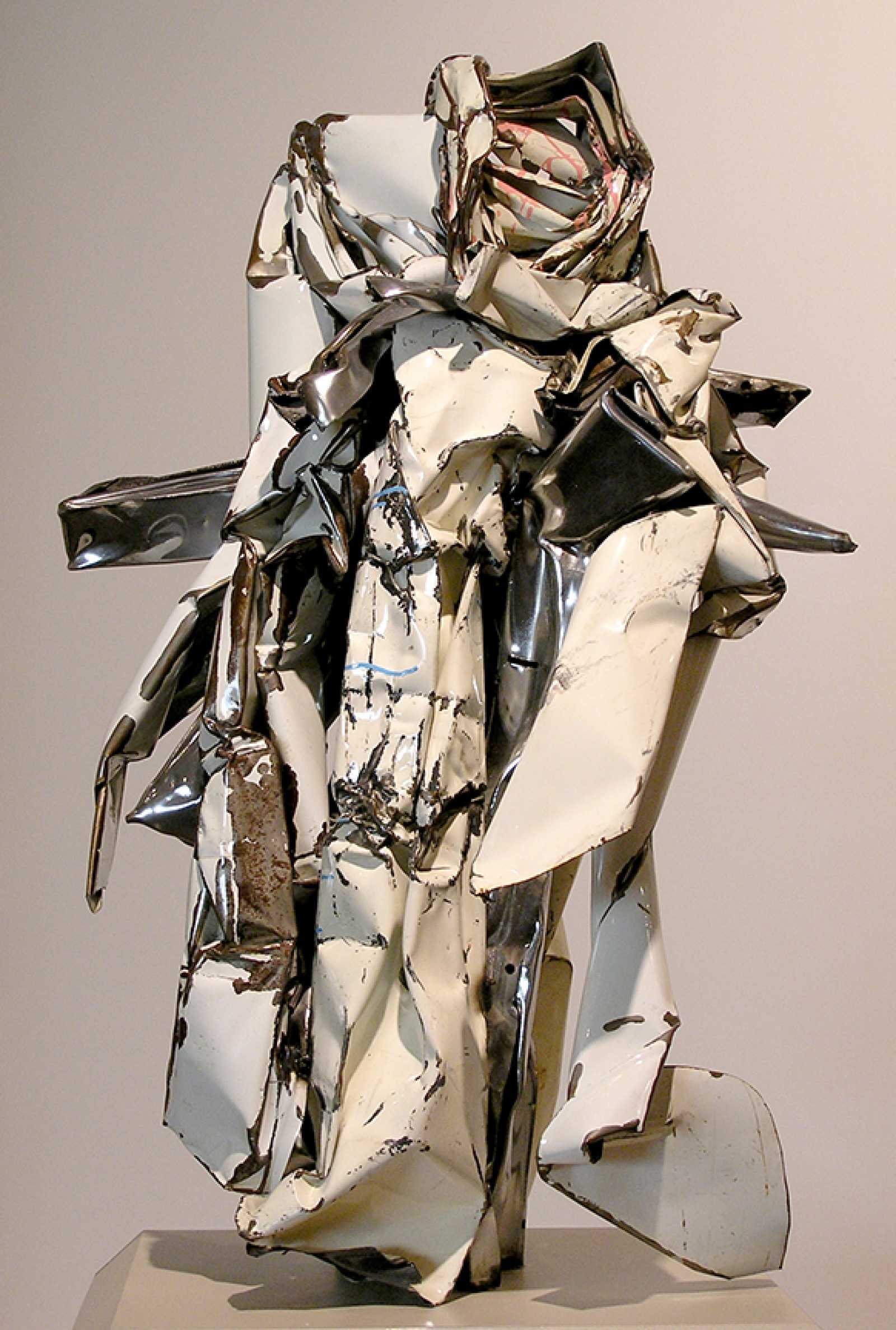Artworks of the Week
John Chamberlain
John Chamberlain is best known for contorted monoliths assembled from automobile sheet metal. His sculptures, emblematic of postwar experiments in industrial materials, also share a formal affinity with abstract paintings of the period by artists such as Franz Kline, who was one of Chamberlain’s friends. The twisted steel in his works embodies dynamic movement, akin to a Willem de Kooning painting but brought into three dimensions. This work’s forcefulness is underscored by the play among different finishes: shiny, satin, matte, and scratched areas, each demonstrating that this work is indebted as much to painting as it is to the sculpted form.
Chamberlain spent his formative years at the School of the Art Institute of Chicago, but, dissatisfied with traditional education, in 1955 he found his way to Black Mountain College in North Carolina. The school’s experimental and multi-disciplinary approach had a profound impact on Chamberlain, and there he developed the ideas that fueled his signature sculptural forms. Soon after, upon moving to New York, Chamberlain made his first sculpture from automobile parts in the backyard of fellow artist Larry Rivers’ Southampton home.
John Chamberlain (American, 1927-2011), Bees Knees, 1988, painted and chromium-plated steel, 60 x 38 x 26 inches. Gift of Steve Chase, 17-1994.
Lorser Feitelson
Lorser Feitelson came to Los Angeles in 1927, bringing with him Modernist ideas he had adopted while living in New York and Paris. He became an influential leader, lecturer, gallery owner, and teacher at the Chouinard Art Institute—now CalArts. He employed his art and his role in the community to help establish Los Angeles as an important art center.
Along with artist Helen Lundeberg, who was his wife, Feitelson was a founder of Subjective Classicism, also known as Post-Surrealism. In 1934, the two wrote a manifesto distinguishing their movement from European Surrealism with its focus on the unconscious mind. Post-Surrealism, on the other hand, intended to guide viewers through imagery towards deeper meanings.
Feitelson—as well as Karl Benjamin, Frederick Hammersley, John McLaughlin, and Lundeberg—was instrumental in the development of California hard-edge painting in the late 1950s. The term “hard-edge painting” was used to describe the work of abstract, particularly those on the West Coast, whose work featured geometric abstraction, clean lines, and purity of form and color. Their work emphasized precise surfaces as an alternative to the sweeping gestures of New York’s Abstract Expressionist painters. Feitelson said in 1964, “I’m a Classicist in the sense that I cannot possibly work by making a decision that’s what we call ‘fortuitous,’ like Jackson Pollock paints.” Through the 1960s and 1970s, Feitelson continued to develop his hard-edge paintings with a growing sensuousness of line and color as in Untitled, 1964.
Lorser Feitelson (American, 1898-1978), Untitled, 1964, gloss and matte enamel on canvas, 60 × 40 inches. Gift of Mr. and Mrs. Lorser Feitelson, 23-1969.


